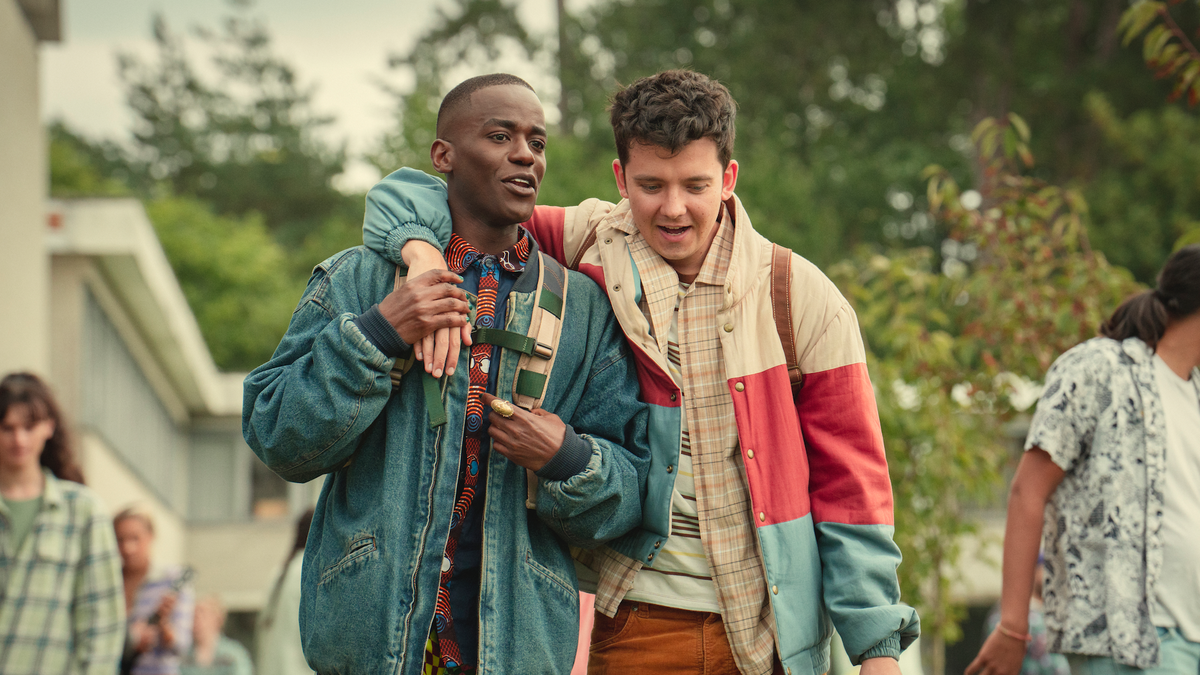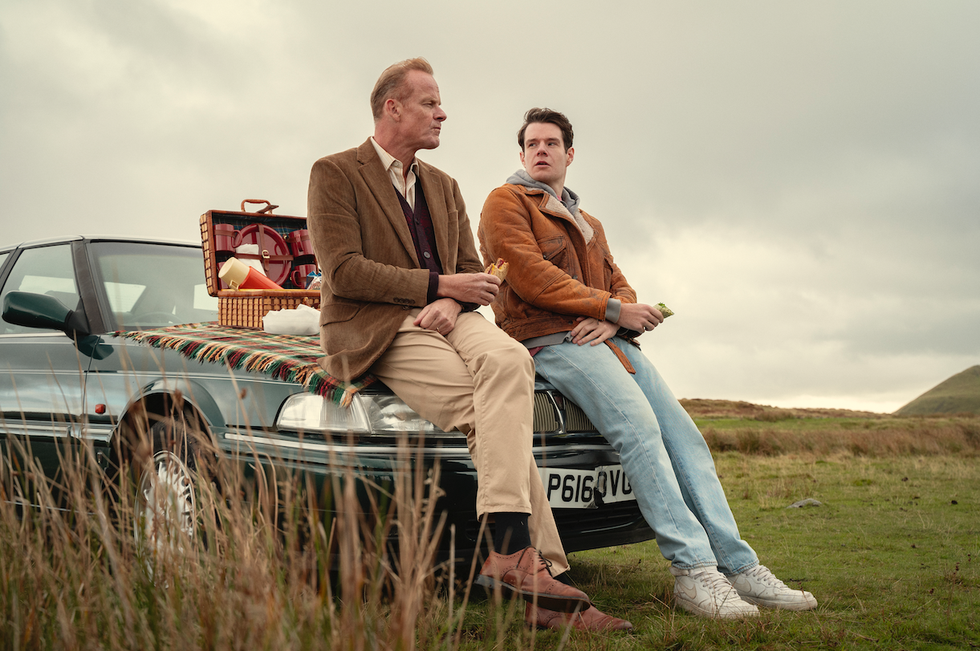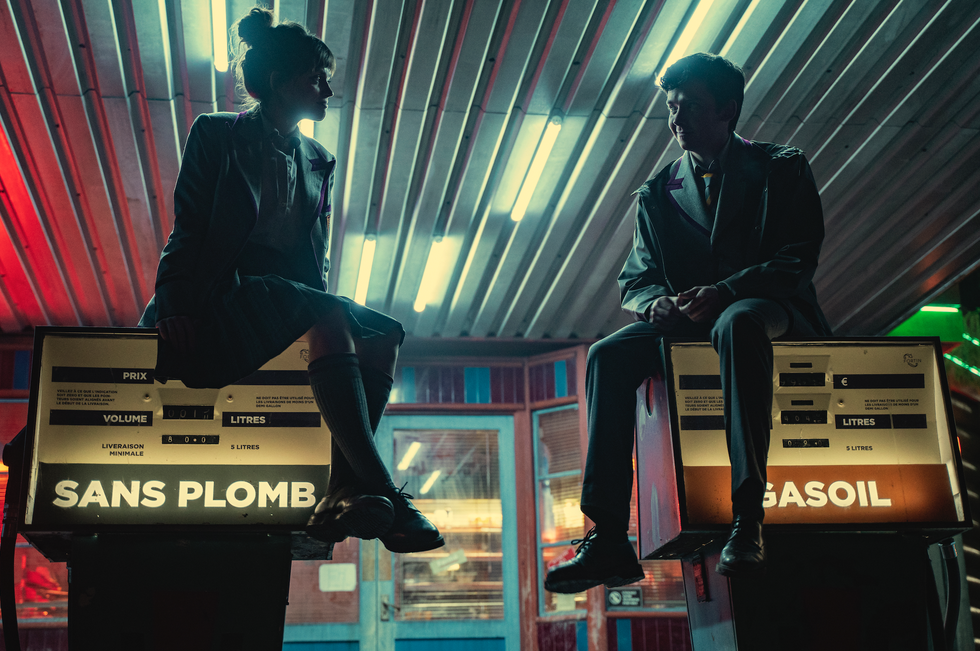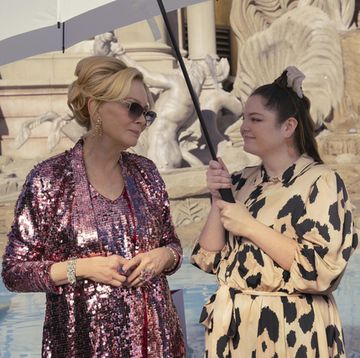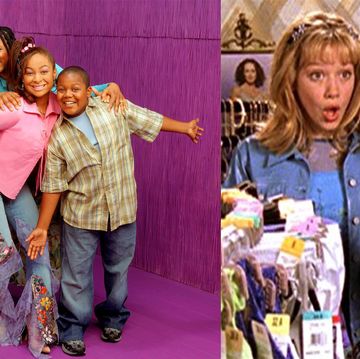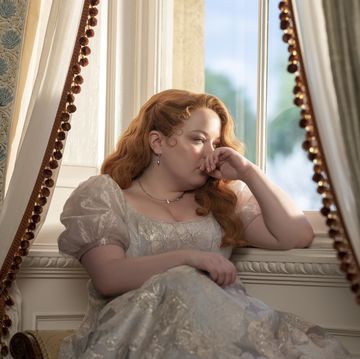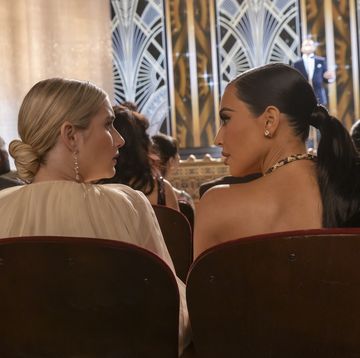Since the dawn of time (and by that I mean the beginning of the Netflix series Sex Education), I have wondered when, exactly, the show is set. On a first look, it's easy to assume you're watching a period drama. The clothes, the cars, the homes—they all scream '90s or even '80s. It's like if a John Hughes movie was set in the U.K. But a few minutes into the pilot episode, someone flashes a smart phone and things get a little bit more confusing. Four seasons later and I still have questions.
To clarify, the show is definitely a modern one, and the show's creators have confirmed it is set in the present day. Especially in the final season, there are conversations about sexuality, gender, trans identity, ableism, and race that are very specifically 2023, and I mean that as a compliment. One character is documenting their journey on testosterone, while another is recovering from a sexual assault and reclaiming her power. In the first season, a character makes a joke about how homophobia is "so 2008." It has a very "catch up, millennials!" vibe to it that has me, a millennial, taking notes. And something the show has always done so well is talk about those meatier topics in a way that doesn't feel preachy or homeworky.
But in the background of these conversations is, IDK, a '96 Volkswagen Cabrio or a box TV that looks like you'd find it at your grandparents' garage sale. Or an actual phone with a cord mounted to a wall, which half the audience for this show probably doesn't even recognize because they are too young to remember when their parents or grandparents had them. Or costuming that feels like the characters have never once laid their eyes on TikTok or heard the phrase "quiet luxury." (Which, jealous.) And obviously people in real life drive older cars and own older TVs, of course. But my brain has never quite been able to comprehend the mashup of all these things.
The show's creatives have explained these choices as an intentional way to make the series feel timeless. "From the start, Sex Education has been a very timeless, periodless show. There's influences from the '80s, '70s, from every decade. These days, that is what our fashion is. We wanted to keep that whole vintage, secondhand, mishmash of looks in this," Daniella Pearman, the costume designer on the final season of the show, said in an interview with Cosmopolitan. And the show's creator, Leslie Munn,told Thrillist in 2019: "We all absolutely love the teen genre, particularly the John Hughes films of the 1980s so we really wanted to make the show have the feeling that it's an homage or that it has this nostalgic backdrop, but that we are talking about very contemporary, modern themes and storylines for the characters."
And it definitely does give the show a feeling of eralessness (that's not a word). But the nostalgia that makes the show so cozy is also a reminder that in the era in which all those clothes, cars, and tech were actually popular, none of these same conversations around sexuality or gender or race could happen. It only serves to remind us that the era of the cord phone was definitely not as progressive, which is a little bit of a bummer, but also a remind of how far people have come.
Maybe the biggest reason I watch the show and feel "brain, broke" is that I'm secretly a little bit jealous of the way these fictional high schoolers can express their individualism. It points a mirror back at me, a person who was so terrified of standing out in high school that she marched to the closest Hollister to buy the exact same outfit every other girl at her school was wearing, even though finding that outfit was hard in the almost-pitch-black of the store. The paralyzing fear of being even a little bit different is so high school, but the kids in the show don't grapple with that the same way I did. Maybe that's just the fiction of it all, or maybe teenagers now actually get to feel a bit more free. I hope for their sake it's the latter.
